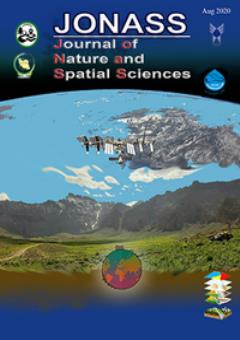Evaluating the Relationship Between Dust Concentrations and Nitrogen Dioxide Levels: A Comparative Study of Kerman and Isfahan- Iran
Subject Areas : Environment
Sajed Rezazadeh
1
*
,
Ali Akbar Jamali
2
![]() ,
Malihe Zakerian
3
,
Hossein Hatefi
4
,
Malihe Zakerian
3
,
Hossein Hatefi
4
1 - PhD student of Islamic Azad University of Yazd
2 - Associate Professor, Department of GIS-RS and Watershed Management, Maybod Branch, Islamic Azad University, Maybod, Iran
3 - Assistant Professor, Department of Geography, Meybod Branch , Islamic Azad University, Meybod, Iran
4 - PhD student of Islamic Azad University of Yazd
Keywords: Dust, Nitrogen Dioxide Concentration, Remote Sensing, Google Earth Engine ,
Abstract :
Background and objective: Air quality, particularly concerning dust and nitrogen dioxide (NO₂) levels, has become a significant environmental concern in urban areas like Kerman and Isfahan, Iran. This study aims to evaluate the relationship between dust concentrations and NO₂ levels with environmental factors, including land use, wind intensity, and vegetation cover (NDVI). By understanding these dynamics, the study seeks to inform effective air quality management strategies. Materials and methods: Data on dust concentrations and NO₂ levels were obtained using Sentinel – 5P and remote sensing techniques and analyzed through Google Earth Engine (GEE). The study employed a comprehensive approach, incorporating satellite imagery for NDVI assessment and land use classification into five categories. Wind intensity was measured using meteorological data. Statistical analyses were conducted to evaluate the correlations between these variables. Results and conclusion: The findings indicate a significant positive correlation between wind intensity and dust volumes, particularly in Kerman, where the highest dust concentrations are noted. In contrast, Isfahan exhibits higher NO₂ levels, mainly in industrial areas with limited vegetation cover. This study confirms both hypotheses: increased wind intensity correlates with higher dust levels, and greater vegetation cover is associated with lower NO₂ concentrations. The results highlight the importance of incorporating environmental factors into air quality assessments, providing a foundation for developing targeted air quality management strategies in both cities.
Amegah, A. K., & Agyei-Mensah, S. (2017). Urban air pollution in Sub-Saharan Africa: Time for action. Environmental Pollution, 220, 738-743. https://doi.org/10.1016/j.envpol.2016.09.042
Cao, H., Amiraslani, F., Liu, J., & Zhou, N. (2015). Identification of dust storm source areas in West Asia using multiple environmental datasets. Science of the Total Environment, 502, 224-235. https://doi.org/10.1016/j.scitotenv.2014.09.025
Francis, D., Fonseca, R., Nelli, N., & Yarragunta, Y. (2024). Unusually low dust activity in North Africa in June 2023: Causes, impacts and future projections. Atmospheric Research, 309, 107594. https://doi.org/10.1016/j.atmosres.2024.107594
Ghane Ezabadi, N., Azhdar, S., & Jamali, A. A. (2021). Analysis of dust changes using satellite images in Giovanni NASA and Sentinel in Google Earth Engine in western Iran. Journal of Nature and Spatial Sciences (JONASS), 1(1), 17-26. https://doi.org/10.30495/jonass.2021.680327
Jiao, P., Wang, J., Chen, X., Ruan, J., Ye, X., & Alavi, A. H. (2021). Next-generation remote sensing and prediction of sand and dust storms: State-of-the-art and future trends. International Journal of Remote Sensing, 42(14), 5277-5316. https://doi.org/10.1080/01431161.2021.1912433
Kaiser, W., & Meyer, J. H. (Eds.). (2016). International organizations and environmental protection: Conservation and globalization in the twentieth century (Vol. 11). Berghahn Books.
Koohestani, B., Darban, A. K., Mokhtari, P., Darezereshki, E., & Yilmaz, E. R. O. L. (2021). Geopolymerization of soil by sodium silicate as an approach to control wind erosion. International Journal of Environmental Science and Technology, 18, 1837-1848. https://doi.org/10.1007/s13762-020-02943-2
Middleton, N., Tozer, P., & Tozer, B. (2019). Sand and dust storms: underrated natural hazards. Disasters, 43(2), 390-409. https://doi.org/10.1111/disa.12320
Mokhtarisabet, S., Jamali, A. A., & Hosseini, F. S. (2024). City sprawl and peri-urban land use transition potential using satellite images and geospatial Artificial Intelligence. In Modern Cartography Series (Vol. 11, pp. 119-140). Academic Press. https://doi.org/10.1016/B978-0-443-15832-2.00006-X
Mokhtari, M., Jafari, N., Hajizadeh, Y., Mohammadi, A., Miri, M., & Abdollahnejad, A. (2017). Estimation of health effects of PM2. 5 exposure using Air Q model in Isfahan during 2013. Health and Development Journal, 6(1), 74-84.
Rahimi, M., Abdollahi, A., & Elaghi Hossieni, M. (2015). Locating Provisional Inhabitancy Camp Population during Earthquake Using GIS and Fuzzy Logic (Case Study: the Cities of Jiroft and Anbarabad). Journal of Urban Social Geography, 2(2), 41-57.
Shafaqi, S. (2002). Geography of Isfahan. Isfahan University.
Shon, Z. H., Kim, K. H., & Song, S. K. (2011). Long-term trend in NO2 and NOx levels and their emission ratio in relation to road traffic activities in East Asia. Atmospheric Environment, 45(18), 3120-3131. https://doi.org/10.1016/j.atmosenv.2011.03.009
Sicard, P., Agathokleous, E., Anenberg, S. C., De Marco, A., Paoletti, E., & Calatayud, V. (2023). Trends in urban air pollution over the last two decades: A global perspective. Science of The Total Environment, 858, 160064. https://doi.org/10.1016/j.scitotenv.2022.160064
Sokolik, I. N., Shiklomanov, A. I., Xi, X., de Beurs, K. M., & Tatarskii, V. V. (2020). Quantifying the anthropogenic signature in drylands of Central Asia and its impact on water scarcity and dust emissions. Landscape dynamics of drylands across greater Central Asia: people, societies and ecosystems, 49-69. https://doi.org/10.1007/978-3-030-30742-4_4
Taheri Shahraiyni, H., Karimi, K., Habibi Nokhandan, M., & Hafezi Moghadas, N. (2015). Monitoring of dust storm and estimation of aerosol concentration in the Middle East using remotely sensed images. Arabian Journal of Geosciences, 8, 2095-2110. https://doi.org/10.1007/s12517-013-1252-3
Tong, D. Q., Gill, T. E., Sprigg, W. A., Van Pelt, R. S., Baklanov, A. A., Barker, B. M., ... & Vimic, A. V. (2023). Health and safety effects of airborne soil dust in the Americas and beyond. Reviews of Geophysics, 61(2), e2021RG000763. https://doi.org/10.1029/2021RG000763
Waggoner, D. G., & Sokolik, I. N. (2010). Seasonal dynamics and regional features of MODIS-derived land surface characteristics in dust source regions of East Asia. Remote Sensing of Environment, 114(10), 2126-2136. https://doi.org/10.1016/j.rse.2010.04.017
Xing, Y., & Brimblecombe, P. (2019). Role of vegetation in deposition and dispersion of air pollution in urban parks. Atmospheric Environment, 201, 73-83. https://doi.org/10.1016/j.atmosenv.2018.12.027
Yussupov, A., & Suleimenova, R. Z. (2023). Use of remote sensing data for environmental monitoring of desertification.

